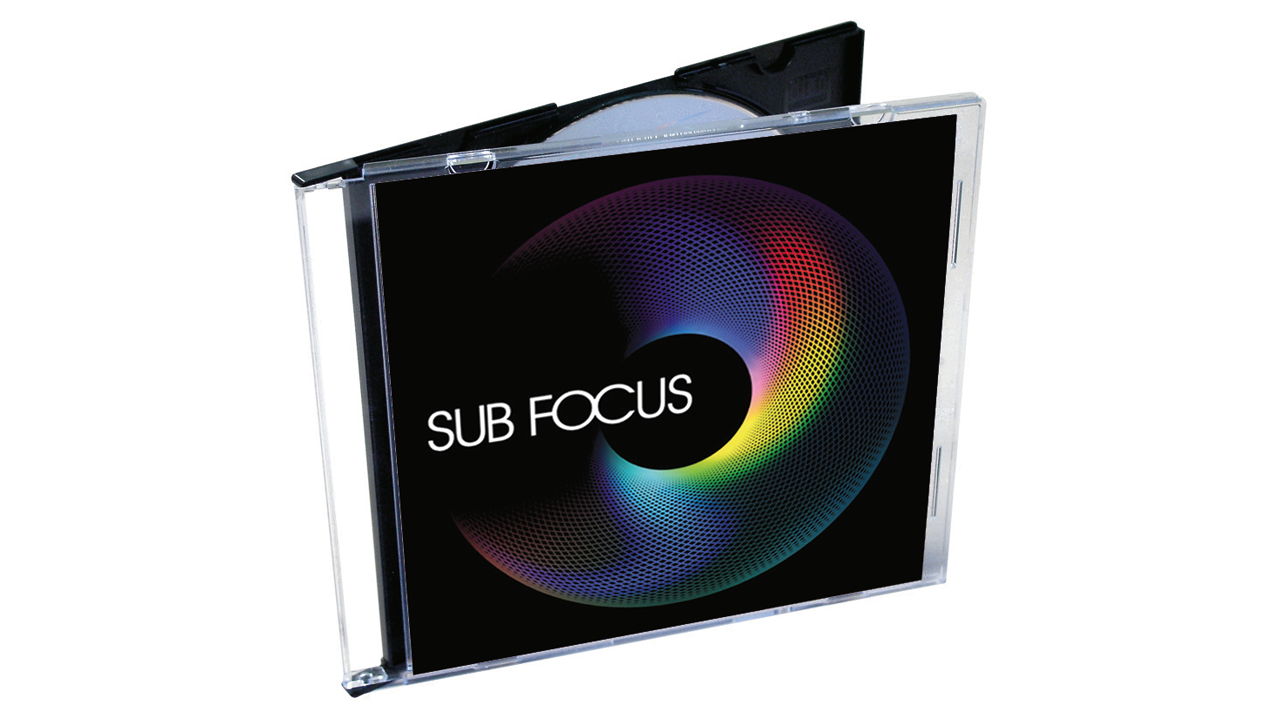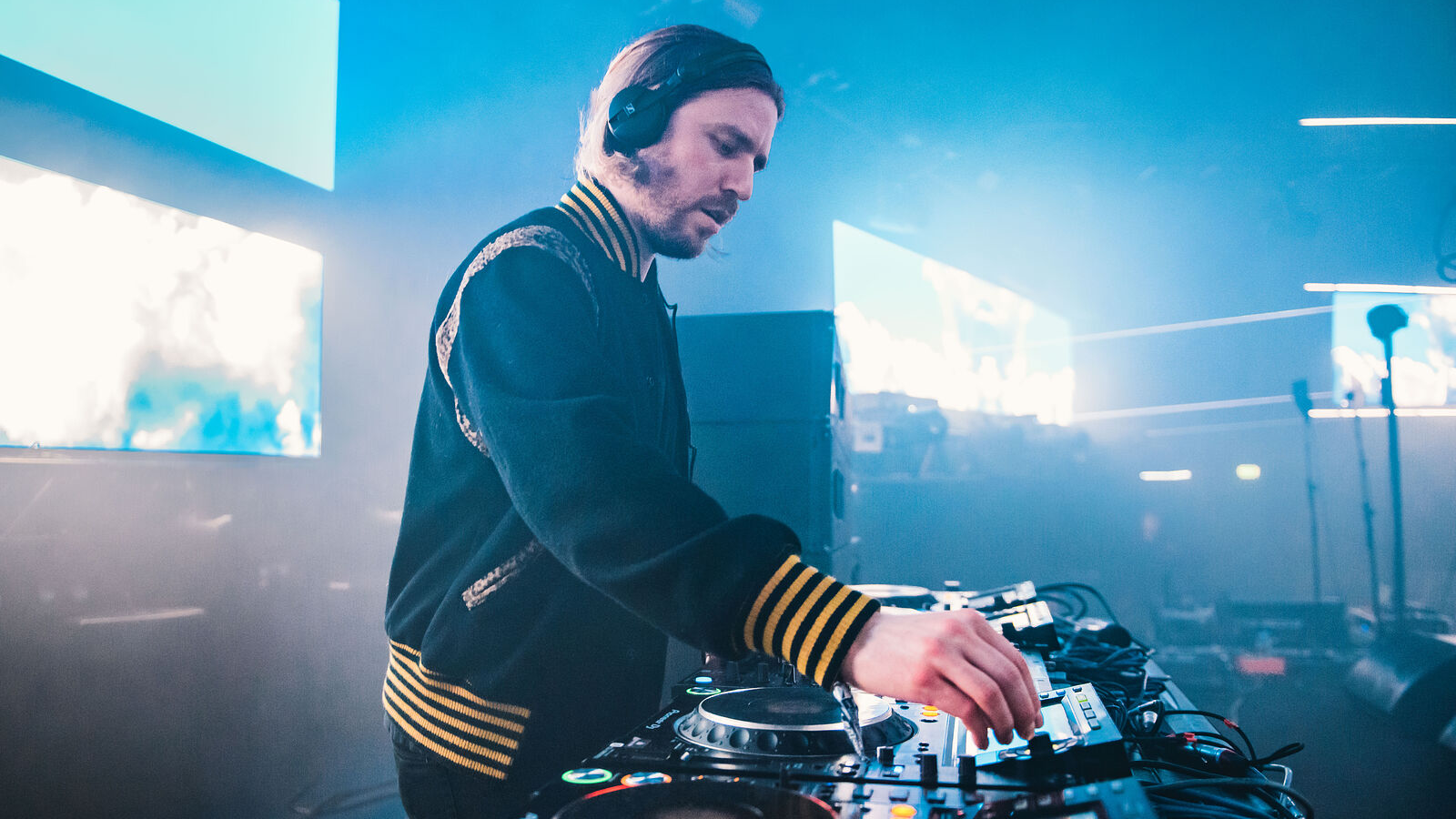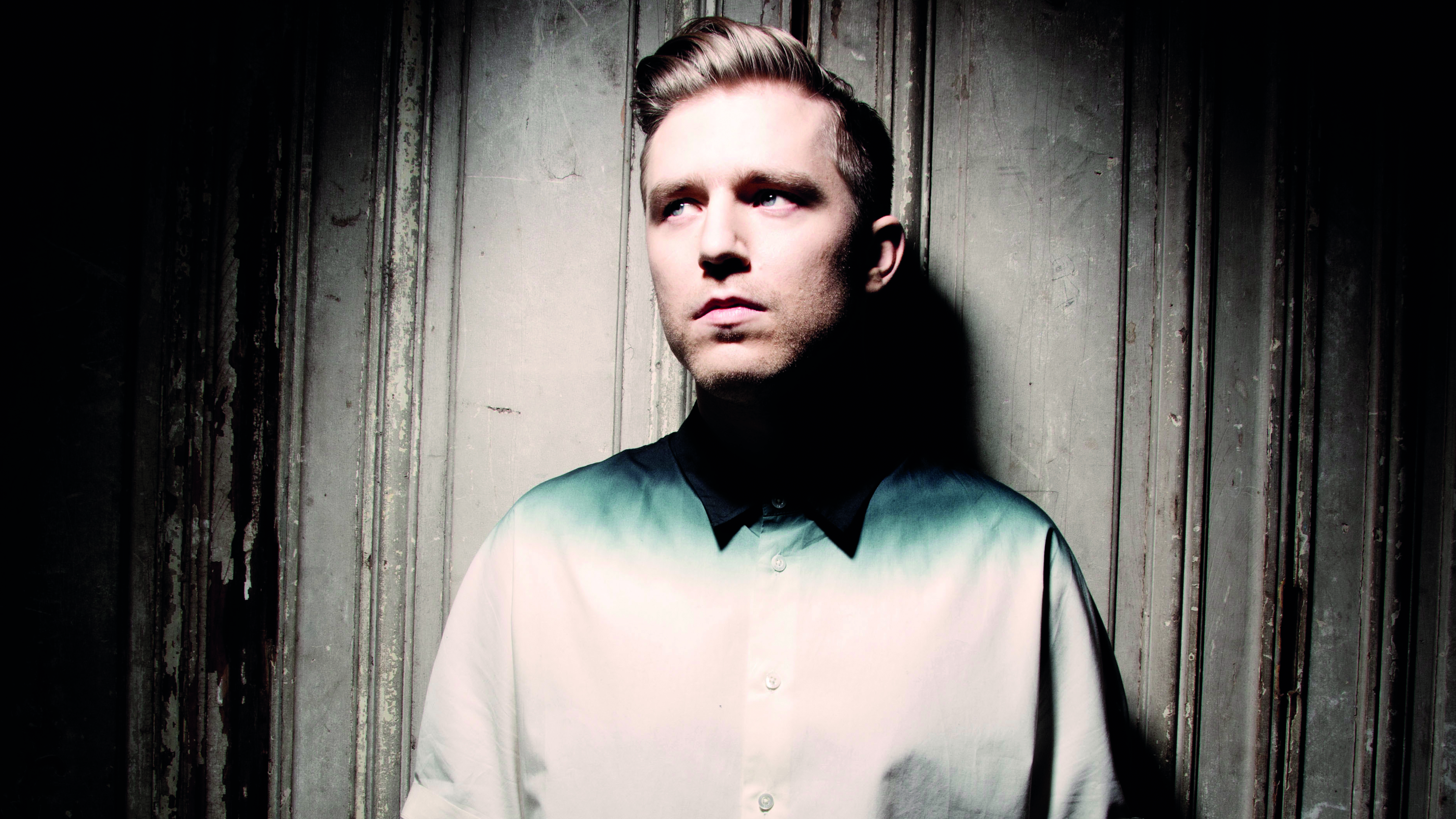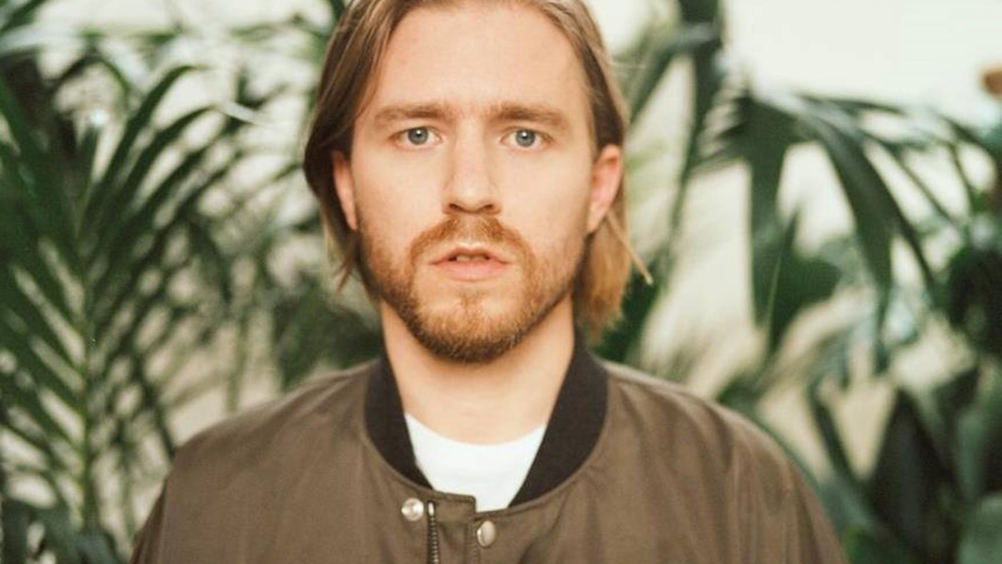Classic album: Sub Focus on Sub Focus
Sub Focus takes us through his eponymous debut, track by track

Steel sharpens steel, as they say. So, when the cream of the UK underground all started taking rooms in the same studio complex, they were bound to motivate one another.
Such was the case for Sub Focus, who was holed up next to Chase & Status, Shy FX, Nero, Breakage, and Caspa, in 1980s hitmaker Pete Waterman’s County Hall site, on London’s South Bank.
It’s the early noughties. He’s buzzing off trips to Ibiza, and fully hooked on early Justice, Ed Banger, and minimal techno and house. Bunkered down in this safe space, he’s inspired by the bold studio steps of his contemporaries, and determined to find a new sound of his own.
“I was working in a proper studio for the first time,” he says. “It was quite surreal, surrounded by Kylie and Steps gold discs. But, it became a sort of hub for a few of us who were in a similar headspace to come to.
“We were all encouraging each other to take risks with the type of music we were making, expanding from DnB into making different tempo genres.”
It was quite surreal, surrounded by Kylie and Steps gold discs.
The resulting music would become his self-titled debut album. Full of stadium synth riffs, right out of the Daft Punk playbook, as well as rewrites of old school jungle codes, tracks fully built on FX riffs, and fresh experiments with time signatures.
“Those were the influences running through the album,” says Sub Focus. “I was using triplets on some tracks – I’d never really heard that done before. And using risers for the hook of a song, which was something that I’d borrowed from techno.
Get the MusicRadar Newsletter
Want all the hottest music and gear news, reviews, deals, features and more, direct to your inbox? Sign up here.
“I was trying to absorb a lot of music from other genres and bring ideas in from there. Once I’d found these angles, it really helped me to find more of a niche for myself and the momentum I needed to create the album.”
Then, from time to time, his producer pals would pop their heads in – and he could gauge feedback and tweak his creations until they were ready. “It was an exciting time for the evolution of our music,” he says. “We kinda pushed each other to try new things.”

Let The Story Begin
“I remember being slightly conflicted about starting the album with this as it’s such an intense track! But, because of the title of the song, it made sense to start the record with it.
“I was listening to Vangelis a bunch so ended up using some [Yamaha] CS-80-type sounds. Which then moves into some crazy bass modulation that I made on Massive.
“This track was always a big moment in my sets, with some huge crowd reactions.
“I was keen to make a dance album. I wasn’t trying to overthink the tracks on this record, if you see what I mean? A lot of them were very aimed at the club.”
World Of Hurt
“I’d found this acapella from Bugz in the Attic, which I thought would be incredible for a drum & bass track. I’m good friends with Chase & Status and they invited me to their studio to re-record the vocal with [their collaborator] Takura [Tendayi]. He was great for me to work with early on as he’s really vibey in the studio and super easy to work with.
“I loved their setup, and ended up renting the next door studio. Which was cool for all of us, as we could give feedback on each other’s tracks. We gave each other a lot of inspiration.
“It was important for me to progress into having a proper studio. It benefited the vocal recording and writing elements of my music.”
Follow The Light
“I was really keen to have a whole mixture of intensities on the album and not just have wall-to-wall dancefloor material.
“This is one of the mellower tracks on the record, and a good example of the house and techno influences I was taking in at the time. I remember particularly Booka Shade’s Movements album influencing the types of sounds I made for this one.
“We did a vocal version with TC and Takura on it, but it’s just the instrumental one that’s on the album. If I was making the album now, I may have chosen the vocal version.”
Last Jungle
“When I was in school in the ’90s, I heard Incredible by General Levy – That was one of the first tunes that really hooked me into jungle and drum & bass.
“This song is about reminiscing on that time. I liked that the cut-up vocal sample lyric I made sounded like it was referring to that – talking about old memories."
Andy C was my A&R for this album, which was amazing as he was DJing constantly around the world, testing my material.
“I was enjoying that wistful vibe people like Burial were doing at the time, using Reece basses and sine waves, and it has old skool influences like Papua New Guinea by Future Sound Of London, too.
“Unexpectedly, it ended up becoming one of the most popular songs on the album.”

Deep Space
“Andy C was my A&R for this album, which was amazing as he was DJing constantly around the world, testing my material.
“We’d do A&R at my studio, and swap music on AIM, which is what everyone was using at the time.
“I would send him super short demos. This track was just 48 bars! I think he cheekily created an edit, then cut it to vinyl. He ended up playing it in his sets for ages. Seeing the reaction, I had to turn into a full length track.
“This was more one for ‘the heads’, and influenced by the rolling drum & bass you’d hear at RAM at The End, in the early noughties.”
Rock It
“This started by me recreating a bunch of Daft Punk sounds, using that as a palette for a DnB track.
“When making the album I got really good at figuring out how other people made their sounds. So, for this I was using vocoders, like the Roland SVC-350, some Talkbox, through to recreating the synth leads and guitar stabs that Daft Punk sampled from Breakwater’s Release the Beast for their track, Robot Rock.
“The combo of these type of sounds in a DnB track sounded really fresh at the time, and it ended up being my first Top 40 charting song.”
Move Higher
“James Culture Shock is a really old friend. This is a house-type track we did together. It’s unusual, compared to everything else we’d done. I wanted to include a mixture of tempos on the album, to show what I was into, and what I could do."
I used risers inspired by the idea of a ‘Shepard tone’, where rising sounds appear to go on forever, like an auditory illusion.
“Artists writing multiple genres was really unusual at the time, and suddenly it felt fresh and exciting to be less restricted by tempos. This coincided with people listening to way more music online on iTunes and YouTube, and it widened people’s musical diets and receptiveness to this, I think.
“With our sound selection we were trying to link it back to the DnB techniques we are more known for – using breakbeats like the Think break, and all the bassline LFO stuff.”
Vapourise
“This is another I used the Roland vocoder on, and a sister track to Timewarp – using shifting time signatures, going between triplets and 4/4 beat patterns.
“Very techno influenced. I used risers inspired by the idea of a ‘Shepard tone’, where rising sounds appear to go on forever, like an auditory illusion.
“If you have two risers, running parallel, and as one starts to get too high, the lower one on a lower frequency starts fading in. So, you get this feeling of this endless upward pitch movement.
“It was something from techno tunes by Dubfire and others, that I wanted to put in a DnB context.”
Splash
“Probably more influenced by the sort of genres I was listening to when I got into music – bands like Nirvana. I wanted to try and emulate the type of soft/loud dynamic they had been using, but on a drum & bass track.
“I used a lot of sine waves for the melodies, intros, and breakdowns. And then they moved into more aggressive square waves, in the drops.
“Same with the drums. I was using very live sounding, big breakbeats, with splashy cymbals and stuff, for the drops. More stripped-down drums for the breakdowns.”
Could This Be Real
“I remember thinking the world was ready for an M1 piano revival. So, I was kinda early on that trend.
“I actually recorded the vocal with Stamina MC, a legendary DnB MC and a longtime collaborator of Shy FX. I don’t think I’ve told anyone this before – it’s not obvious that it’s his voice on the track.
“We used this technique where you pitch the whole song down, and record vocals on that. Then return the vocal and track to its original pitch. It artificially creates the sampled-sounding pitched up vocal you hear.
“You get weird artefacts when you do that because a singer’s vibratos speed up or slow down, depending on which way you’re going. It’s a fun technique, influenced by old rave records and The Prodigy.”

Triple X
“This is really just a track that used to go down really well in my sets. And it’s something that I started a really long time ago when I was working on a remix for Dr. Octagon. It was a sort of ‘off-cut’ from that session.
“I’ve always enjoyed working with lead melodies, and that’s become a signature of my stuff as Sub Focus.
I started hiring bits and bobs of hardware, and realised that some of these things were adding a new dimension to my sound.
“For my drums, around this time, I was looking at waveforms a lot, and using techniques like over-normalisation and clipping, in favour of things like limiting or compression.
“I was doing this in order to get more power and volume out of the drums, without affecting the transients as much.”
Timewarp
“This was one of the first tracks I wrote for the album, and the first single. Definitely one of the ones I’m most proud of as it just didn’t sound like anything else at the time.
“I’d come up with the idea to shift between time signatures on this song, hence why I called it Timewarp. So, part of the song is in triplets and part of the song is in 4/4. The track still gets played out today. It created a mini surge of triplet DnB tracks after.
“I’ve always really liked the different feel of the grooves that you get with triplets in drum & bass. It sort of feels less hectic as some of the beats are more spaced out.”
Coming Closer
“I was searching for an apt track for the last song on the album, and I’d made this one at the last minute.
“I always try and structure my albums like sets. So, some sections are in key, and some songs sound like they are at the beginning, middle, or end. And I always get that when I listen to tracks when I’m putting a set together. Some just sound like closers, you know?
“I came up with this simple, dubstep-y idea, with this loopy, eerie, vocal. And then I found some vocals that really fitted the ‘last song’ feeling that I’d previously recorded with Takura. I was looking for that epic mood to close the record with.”
In the studio with Sub Focus
“I started the album in a bedroom flat in Holloway. Then rented a space in County Hall studios, opposite the Houses of Parliament. Me, Chase & Status, Shy FX, Nero, Breakage, and Caspa, all ended up with studios in the same complex.
“I was quite ‘anti-gear’ at the time, and into working purely in-the-box. But, I started hiring bits and bobs of hardware, and realised that some of these things were adding a new dimension to my sound.
“I remember hiring a Roland SVC-350, which is a rackmount vocoder from the ’80s. I was kinda obsessed with robot voices. For the track Rock It I used a combination of the vocoder, and some Talkbox, which I’d got around that time as well.
“My setup was primarily a desktop PC, though, running Cubase, with Massive for most of the synth sounds, and Cool Edit. And then I had a small selection of hardware, like the Juno-60. But, I was mainly working in-the-box, at this point.”


Future Music is the number one magazine for today's producers. Packed with technique and technology we'll help you make great new music. All-access artist interviews, in-depth gear reviews, essential production tutorials and much more. Every marvellous monthly edition features reliable reviews of the latest and greatest hardware and software technology and techniques, unparalleled advice, in-depth interviews, sensational free samples and so much more to improve the experience and outcome of your music-making.
"At first the tension was unbelievable. Johnny was really cold, Dee Dee was OK but Joey was a sweetheart": The story of the Ramones' recording of Baby I Love You
"Reggae is more freeform than the blues. But more important, reggae is for everyone": Bob Marley and the Wailers' Catch a Fire, track-by-track






![PRS Archon Classic and Mark Tremonti MT 15 v2: the newly redesigned tube amps offer a host of new features and tones, with the Alter Bridge guitarist's new lunchbox head [right] featuring the Overdrive channel from his MT 100 head, and there's a half-power switch, too.](https://cdn.mos.cms.futurecdn.net/FD37q5pRLCQDhCpT8y94Zi.jpg)



